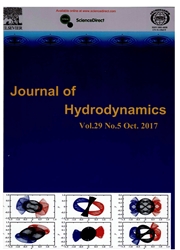

 中文摘要:
中文摘要:
平均深度的流动污染物质联合了的 A 2D 模型基于空铅树网孔被建立精确地在这篇论文与不规则的自然边界在水区域模仿流动。格子被递归的分关于播种点产生。一个发现 newneighbor 算法被介绍。管理方程是在由越过在房间之间的接口使用有限的卷方法,和质量,动量和污染物质的正常流动的并置的保守变量的 discretized 被一个 Godunov 类型流动 DifferenceSplitting (FDS ) 计划计算。模型被使用在一条腹股沟附近模仿流动地。计算的值与观察数据一致。结果显示空铅树网孔有好本地分辨率,高效率和容易的本地精炼。当适用于复杂流动领域时,空铅树格子模型能在效率提供获得,是清楚的或强壮砍流动。最后,模型在江苏 HaizhouBay 被用于流动地和集中地模拟。模仿的弄脏的区域与观察被匹配很好。因此,这个模型能被用来与不规则的自然土地边界预言实际的水区域的流动和集中地。
 英文摘要:
英文摘要:
A 2D depth-averaged flow-pollutant coupled model based on quad-tree meshes was established to accurately simulate flows in water areas with irregular natural boundaries in this paper. The grids were generated by recursive subdivision about seeding points. A new neighbor-finding algorithm was presented. The governing equations were discrctized in collocated conservative variables by using the finite volume method, and the normal flux of mass, momentum and pollutants across the interlace between cells were computed by a Godunov-type Flux Difference Splitting (FDS) scheme. The model was applied to simulate flow fields around a groin. The computed values are in agreement with observed data. The results indicate that quad-tree meshes have fine local resolution, high efficiency and easy local refinement. It is clear that the quad-tree grid model can offer gains in efficiency when applied to complex flow domains or strong shear flows. Finally the model is applied to flow fields and concentration fields simulation in Jiangsu Haizhou Bay. The simulated polluted area is matched well with observations. Therefore, this model can be used to predict flow and concentration fields of actual water area with irregular natural land boundaries.
 同期刊论文项目
同期刊论文项目
 同项目期刊论文
同项目期刊论文
 期刊信息
期刊信息
